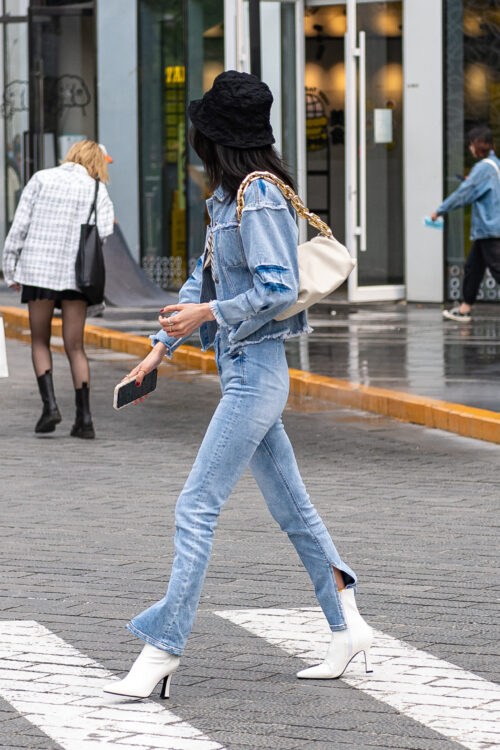The current re-appearance of Y2K fashion is the perfect example of trends showing resilience. You might have seen your mom wear bubble-gum pink halter tops and chunky flip flops in her old disposable photos from summers in the ’90s, similar to what is popular in fashion right now. The re-emergence of trends illustrates how powerful and resilient fashion and pop culture can be.
Fashion and pop-culture trends can all be attributed back to social psychology. Social psychologists Henri Tajfel and John Turner came up with the ideas of in-group and out-group in their social identity theory, which examines the portion of an individual’s self-concept acquired from their membership in relevant social groups.
Being in the in-group is ideal, as a person sees themself as part of the “us,” while the out-group is the “them”. When generalizing this idea with fashion culture, the in-group can be seen as individuals who follow trends and the out-group as people who do not. A central hypothesis of social identity theory includes that group members of the in-group look for negative traits or aspects of the out-group to help enhance their self-image. Applying this to fashion trends and pop culture, this mentality could be why people follow trends set by celebrities or other people they look up to. Because these individuals are seen as relatively liked and superior, it is only natural that people desire to follow them. Trends and popular culture are not inherently bad or unhealthy for society. Rather, they can create a sense of “tribalism” or a herd, which gives people a sense of unity or harmony with each other.
Trends and popular culture are not inherently bad or unhealthy for society. Rather, they can create a sense of “tribalism” or a herd, which gives people a sense of unity or harmony with each other.
The reason why trends reappear every so often is due to many factors. There are only so many ways that fashion and pop culture can be altered. Once individuals no longer progress towards a goal, they tend to regress. Additionally, things that are trendy such as disposable cameras and video recorders are trends that younger generations were unable to participate in. Therefore, it only makes sense that people look up to older figures and try to mimic what they did. Thinking back to Selena Gomez’s Coach campaign around 2016, she used the infamous Huji filter on the promotional photos posted to Instagram. These few photos helped kick-start the retro photo trend, ultimately leading to the current photo trend which is disposable photos.
Another reason why people may be inclined to follow trends is that it works as a mental shortcut. By following what others are doing, it shortens and eases the thought process for someone. This was shown in a study by the infamous social cognitive psychologist Albert Bandura. In 1968 he conducted a study consisting of a group of children who were scared of dogs. Bandura had the kids watch a boy play with a dog. After the experimental group of children observed the boy happily playing with the dog, 67 percent of the children were willing to play with the dog. A month later, a follow-up study was conducted, and the children who were previously afraid to play with the dog were now inclined to play with the dog themselves. These children in Bandura’s study are a great example of how people observe other people’s behavior to create mental shortcuts in order to make decisions.
By following what others are doing, it shortens and eases the thought process for someone.
Imagine you are hectically getting ready to go out with your friends for a girls’ night out. You are not sure what to wear, so naturally, you will pick out pieces in your closet that are considered “in” or trendy to be cohesive with your friends. Within this group of girls, you will see staple trending fashion pieces such as oversized leather jackets or jean jackets, baggy jeans, leather pants, and mini skirts — all things considered trendy now and also in the ’90s and early 2000s. These outfits and trends that we wear separate us into in-groups that we desire to be part of, and it is all explained by social psychology.
European Journal of Social Psychology (1979). DOI: 10.1002/ejsp.2420090207
Journal of Personality and Social Psychology (1968). DOI: 10.1037/h0025260




great job!!!!